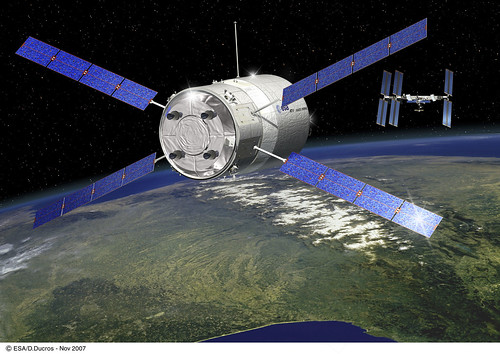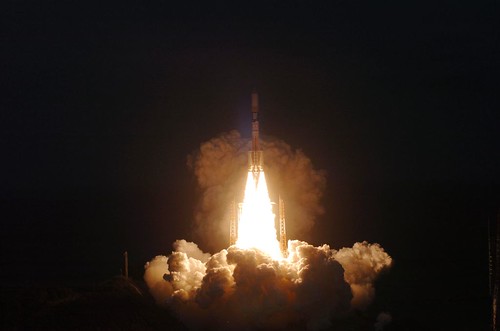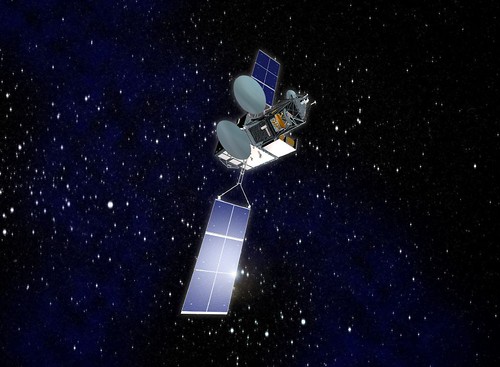DISA Big Contract
Thursday, March 6th, 2008The Defense Information Systems Agency (DISA), the communications support agency for the Department of Defense, has a pretty big RFP out there – $500 million/year for a new satellite services contract:
The Defense Information Systems Agency has kicked off a follow-on procurement for commercial satellite services that could be worth $500 million a year and may attract a large field of bidders, ranging from small businesses to large systems integrators.

The procurement, which could directly effect operations in Iraq and Afghanistan, is expected to be a pretty competitive process – continuing what they beleive to be an efficient public-private partnership:
The Defense Department has mandated that all the military services use DSTS-G, Cowen-Hirsch said, which leverages the department’s buying power. DISA’s cost for satellite services is 25 percent below the industry average. The agency said in its request for information for the Future Commercial Satellite Services Acquisition that it wants to maintain this "price competition, while ensuring maximum effectiveness by considering lessons learned, market evolution and anticipating future DoD needs."
It appears that a large pool of vendors stand ready to meet these requirements, and not just the small businesses that won the DSTS-G contracts in 2001. Eaton estimated that about 50 bidders submitted written responses to the new RFI, including his company and the two other DTTS-G incumbents, Artel Inc. and Spacelink, acquired by DRS Technolgies in 2006.
Rebecca Cowen-Hirsch is the director of DISA’s program executive office for satellite communications. In a recent interview before the follow-up procurement was announced, she was eager to defend the agency’s commercial partnerships:
There has been much debate over the advantages or perceived disadvantages of our primary contract vehicle for acquiring commercial SATCOM services. And yet it remains an incredibly successful tool in acquiring fixed satellite services, bandwidth for our customers. It continues to provide the warfighters great flexibility at some of the best prices in the industry. In fact, we have shown that the DSTS-G contract has provided service globally tailored to the unique needs of the warfighters with prices that are on average 25 percent lower than market averages. This value is derived principally by openly competing COMSATCOM requirements across the commercial marketplace and leveraging the benefits of competition, DoD’s buying power, and DISA’s strong partnership with the commercial satellite industry. We are able to procure very short duration leases, say on the order of a few days or a month, or long multiyear leases. The competition created by our vendors has been very beneficial to the department. Additionally, we have been able to add within the scope of our existing contract capabilities the warfighter values such as protection, access to commercial X-Band, portability, responsiveness and additional flexibilities.
While DSTS-G has been very effective is supporting the DoD, it will come to the end of its life cycle in 2011 [with all options exercised]. We are actively strategizing for our future services acquisition to build on our past experiences and to put in place the DoD’s next generation of commercial SATCOM services. We will continue to rely on DSTS-G while we plan for the future.
Despite the large-scale increase in capacity, some vendors think the procurement should be more expansive:
Tom Eaton, president of Arrowhead Global Solutions, one of the three vendors on DISA’s current Defense Information System Network Satellite Transmission Service-Global (DSTS-G) contract, said his company intends to bid on the follow-on procurement, known as the Future Commercial Satellite Services Acquisition. He said DISA should widen the scope of the procurement to include mobile satellite services as well as the fixed satellite services covered in the current contract, which expires in 2011.
Eaton said DISA also should consider bundling satellite terminal hardware into the Future Commercial Satellite Services Acquisition, along with mobile services, to cut down on administrative overhead and consolidate all commercial satellite communications requirements into one contract vehicle.
Eaton said that demand for satellite communications bandwidth far outstrips the capacity of military systems, a gap that can be filled by commercial satellite services.
DISA, by the way, is constructing a new building at Fort Meade in Maryland. The design contract was almost as much as this satellite procurement—$370 million—but it looks like the design firm knows what they’re doing.






